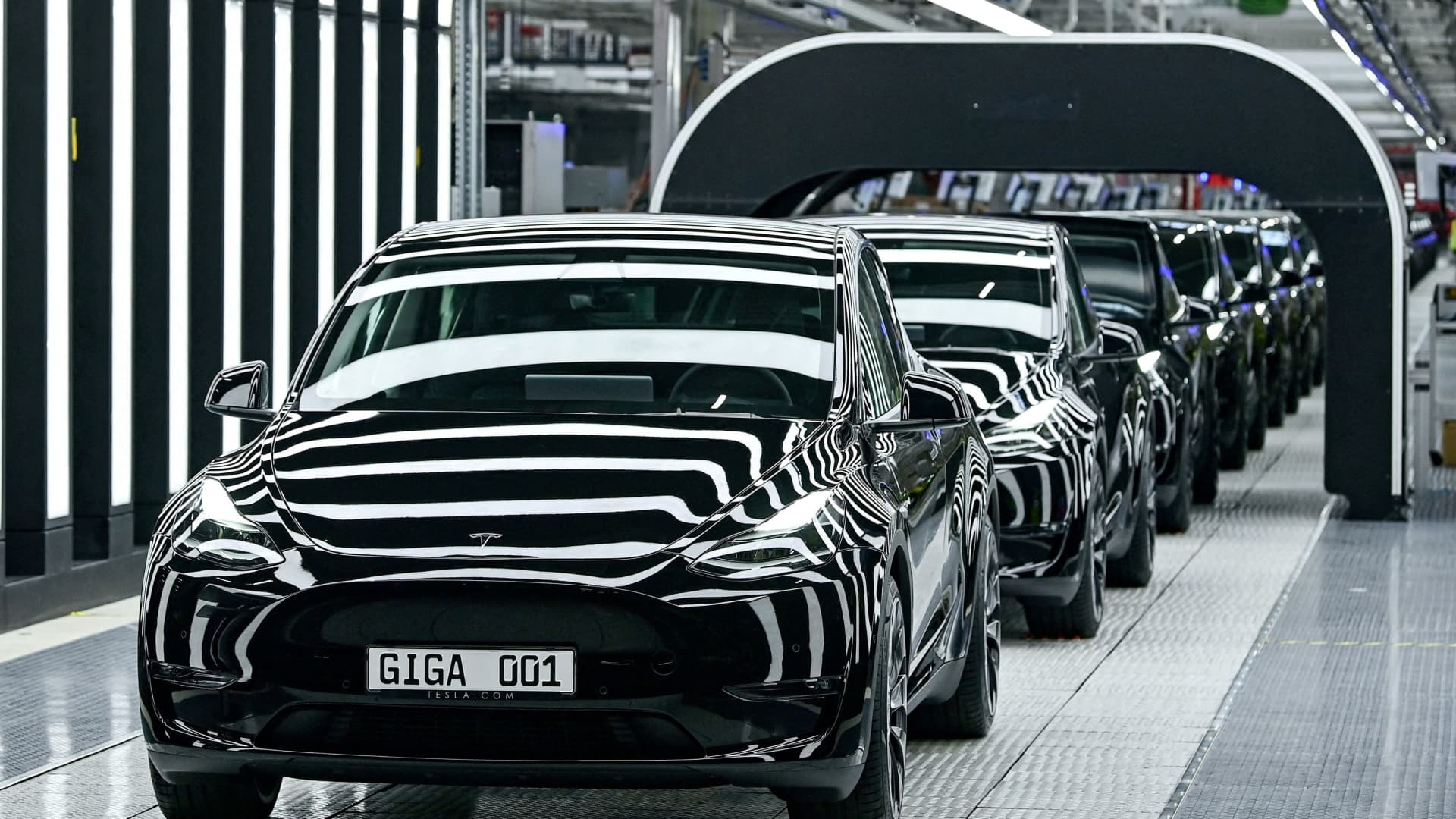Tesla’s plan to slash silicon carbide use sends some chipmakers’ shares down

Model Y cars are pictured during the opening ceremony of the new Tesla Gigafactory for electric cars in Gruenheide, Germany, March 22, 2022.
Patrick Pleu | Pool | via Reuters
Shares in some chipmakers dipped on Thursday after electric vehicle maker Tesla said it plans to greatly reduce the use of silicon carbide transistors in its next-generation vehicle powertrains.
At Tesla’s 2023 Investor Day presentation on Wednesday, which largely focused on efficiency and controlling costs, powertrain engineering leader Colin Campbell took the stage to show how the company plans to reduce the cost of their cars’ powertrains, while maintaining high performance and energy efficiency.
Campbell revealed that, “In our next powertrain, the silicon carbide transistors that I mentioned, that are key component[s] but expensive, we figured out a way to use 75% less without compromising the performance or the efficiency of the car.”
Shares of ON Semiconductor and ST Microelectronics each lost about 2%, while Wolfspeed dropped about 7% as investors worried that Tesla’s moves would be a harbinger for the automotive industry.
Campbell also said Tesla’s new powertrains will feature motors built without any rare earth metals. Raw material supplier, MP Materials, known for providing automakers with neodymium, dropped about 11% in response.
Campbell did not say when the company’s next-generation powertrain would be ready for high-volume production and use in the company’s vehicles, nor did he specify how much it currently spends on these transistors. Executives at the event did not reveal any firm details about the “next gen” Tesla, which some analysts refer to as the Model 2.
Chips made with silicon carbide transistors are widely used in electric vehicles. Generally, they withstand more heat, have a longer life and are more energy-efficient than semiconductors made with silicon power transistors, according to the Institute of Electrical and Electronic Engineers.
Bank of America analysts called Tesla’s claims “notable but premature.”
However, the analysts acknowledged, “If true, this technological advancement could be a major risk for the SiC materials industry (WOLF, COHR, Rohm) and devices (ON and European peers STMicro, Infineon – covered by Didier Scemama).”
They added the possibility that “cheaper [silicon carbide chips] could drive up EV adoption globally so what vendors lose on content could be partially offset by greater EV volumes.”
New Street Research analysts agreed generally, and wrote in a note on Thursday that the announcement from Tesla is actually a good thing for chipmakers as they expect demand to remain high throughout and beyond the EV industry.
They wrote of Tesla’s announcement: “The inverter of the new drivetrain will use a hybrid architecture,” that mixes silicon and silicon carbide transistors, with both types of transistors working together to handle peak loads in a Tesla vehicle, primarily during the vehicle’s acceleration. “This hybrid architecture is for the new platform only, i.e. a low-cost, small, lower-performance car, and will not be adopted for existing models (S, X, 3, Y), or the Cybertruck.”
New Street does not expect a lower-priced, next generation Tesla vehicle to “ramp in volumes before 2025 or 2026.”
Wells Fargo analysts are maintaining an overweight rating on shares of both Wolfspeed and OnSemi with a price target for Wolfspeed of $110 and a price target for OnSemi of $95.
Citing Yole Group in a note on Thursday, Wells Fargo analysts said in the near term the silicon carbide chip supply chain will remain tight due to strong demand from automakers across the board. Every growing EV maker will seek to scale up while controlling costs but in the near term, they will be more concerned about securing a supply of silicon carbide chips for their new models, many of which are set to launch this year and next, they said.
— Michael Bloom contributed to this report.
Clarification: This post has been updated to clarify that MP Materials is a raw material supplier.